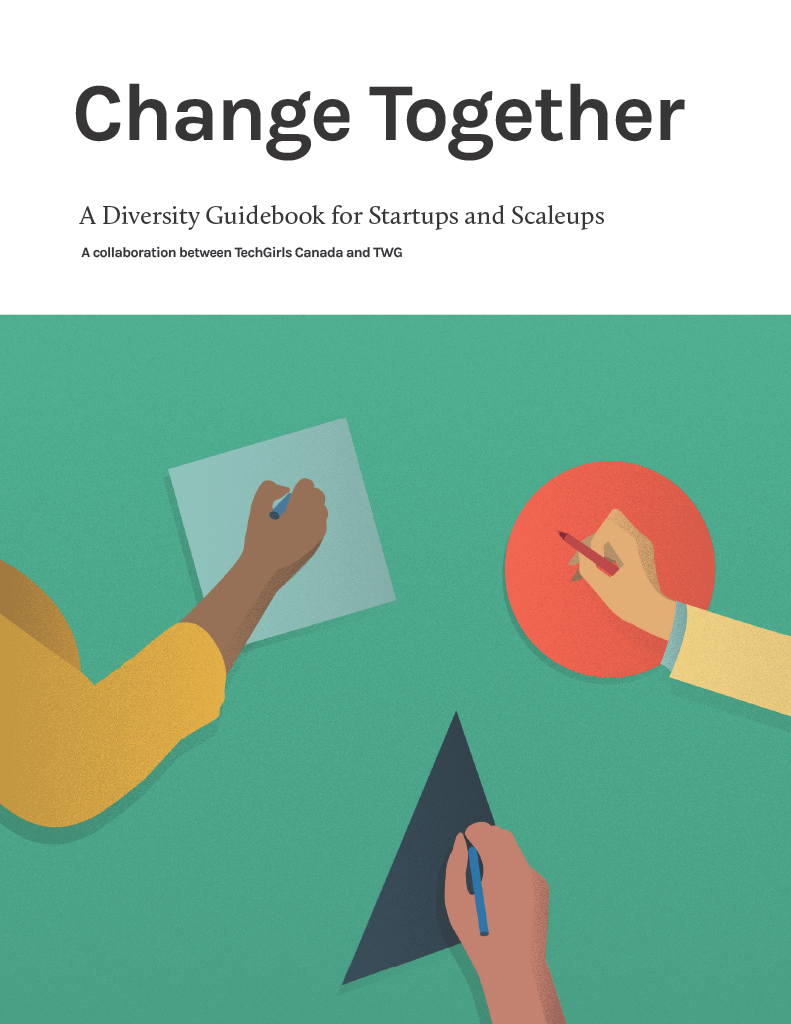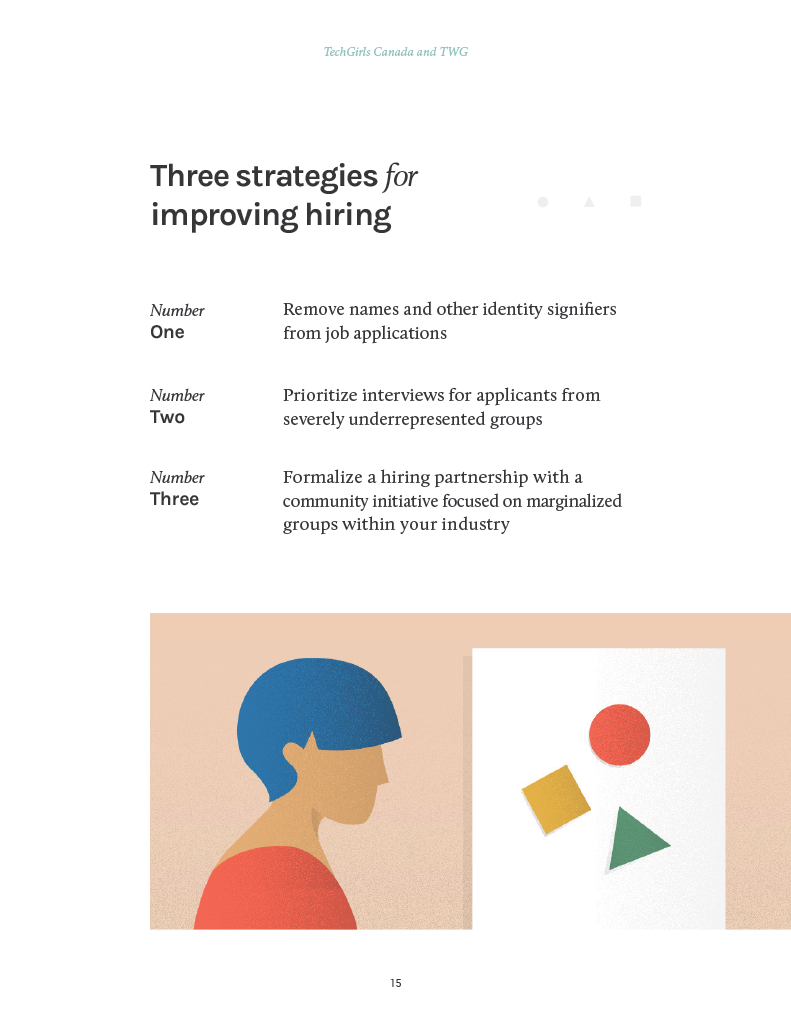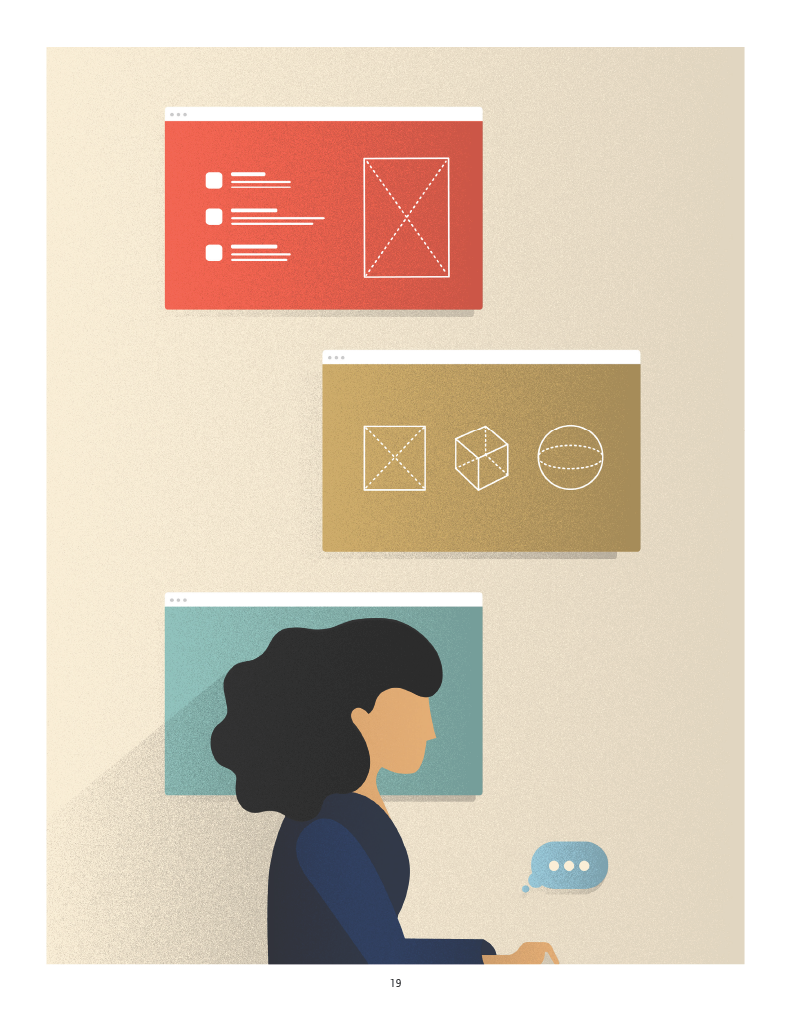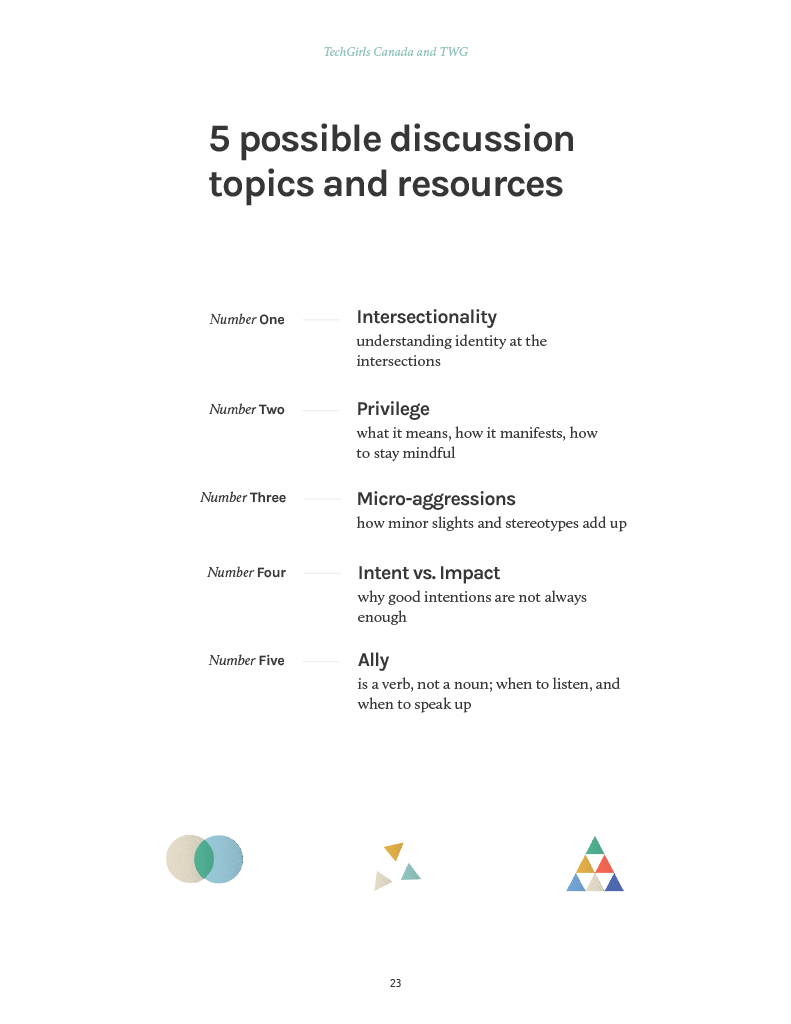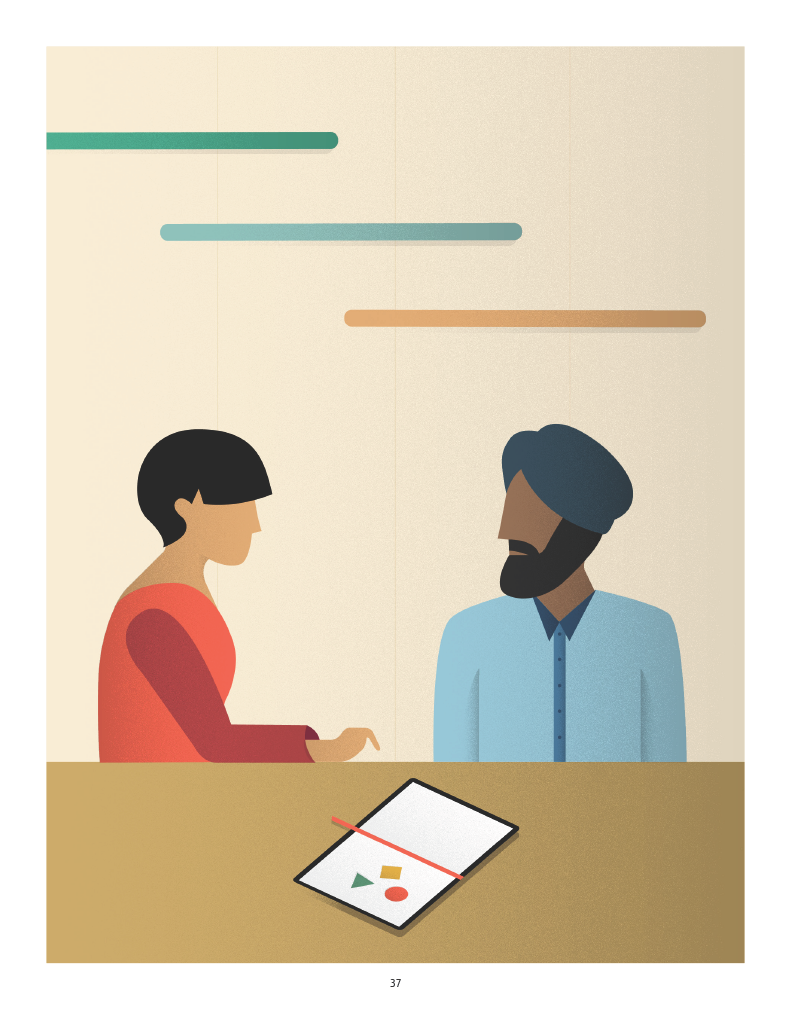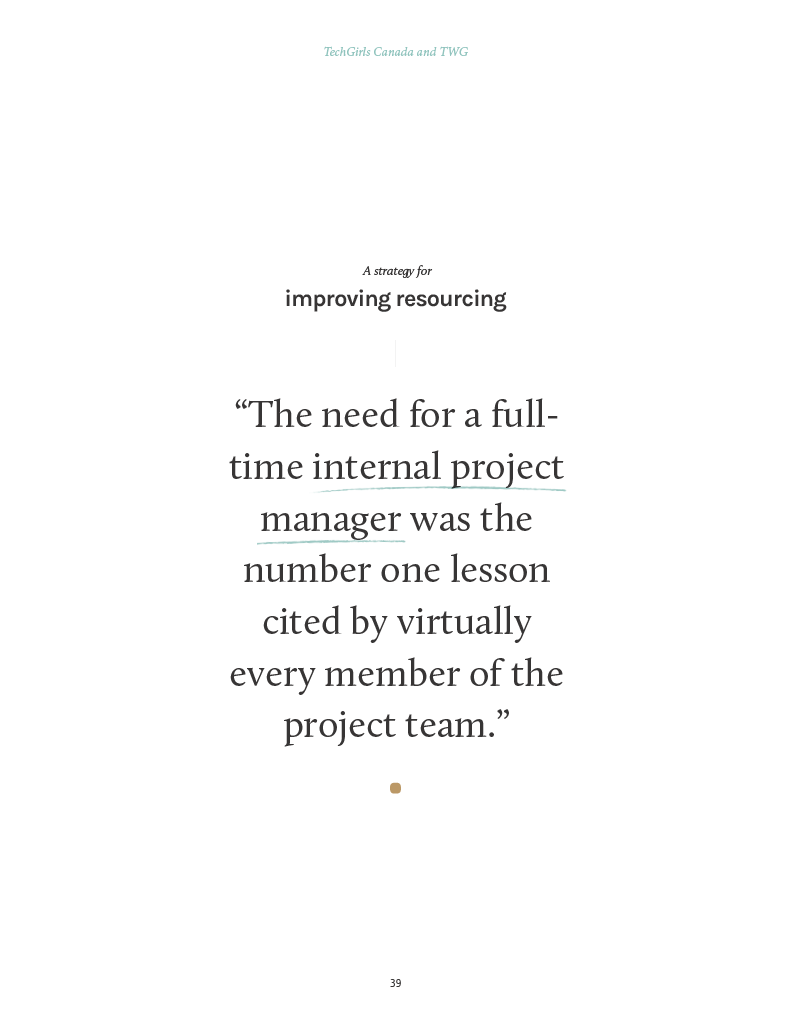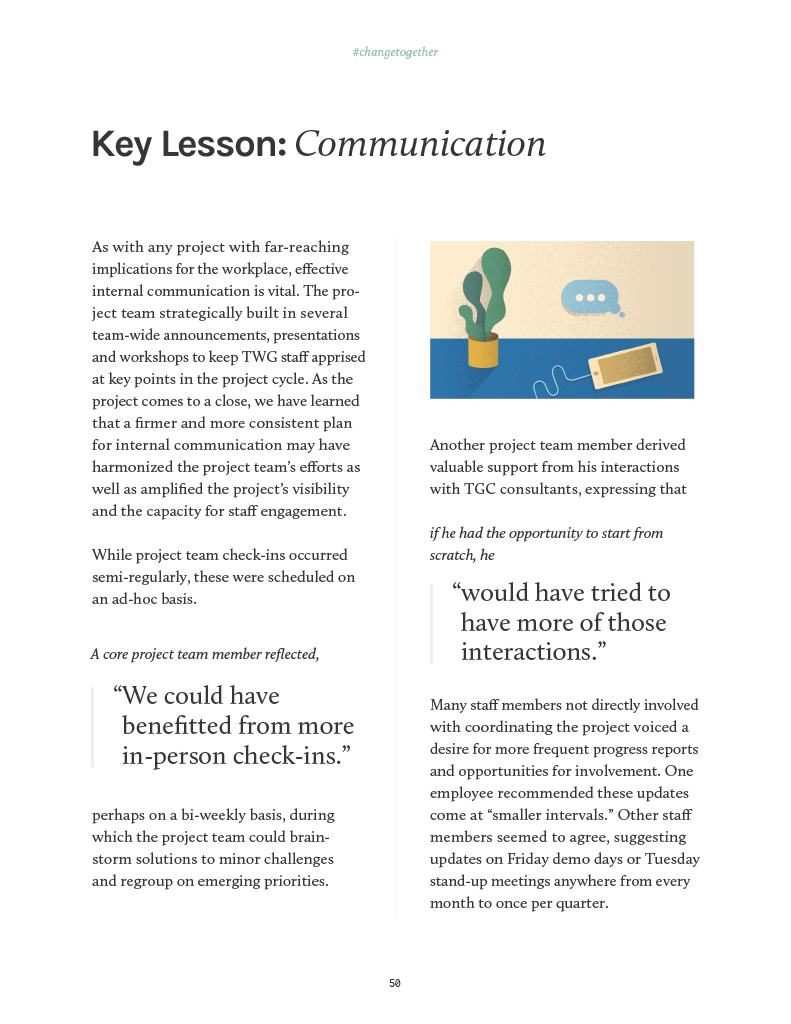Change Together
Change Together
Fortune Magazine editor Ellen McGirt says, "If I could pick one person who has helped shaped my thinking about diversity and inclusion, it’s Saadia Muzaffar, tech entrepreneur and founder of TGC. She and her team have put together a new report called Change Together, an extraordinary resource for anyone who wants to help a company (or a division, frankly) to be more inclusive and productive."
What is Change Together?
This guidebook was designed as a do-it-yourself on-ramp to help Deloitte Digital and other small-to-medium-sized businesses take steps toward diversifying their workplaces. It documents the key successes and lessons learned over a 12-month collaborative period.
This Guidebook contains strategies that are designed to:
Acknowledge the processes of exclusion that shape our current environment.
Center the personal and professional needs and experiences of marginalized people.
Highlight the current disproportionate emphasis on personal and professional needs of those who most often experience privilege.
Get to know the TGC project team lead for #ChangeTogether:
Steph Guthrie is a grassroots educator who uses media and the arts to explore vital questions about social justice. She produces events, resources, and strategic partnerships that challenge the continuum of gender-based violence.
She has designed and delivered workplace training and other educational materials with partners including the Toronto International Film Festival, National Film Board, White Ribbon Campaign, Mozilla and Long & McQuade. As co-founder of Drunk Feminist Films, she creates participatory spaces for fun-loving, critical engagement with pop-culture.
Learn more about Steph Guthrie’s work on her website.
““Change Together was designed as a pilot to explore, test and report on a set of strategies for addressing intersectional gender diversity, equity, and inclusion in the workplace - and make this effort accessible for startups and scaleups specifically.””
Frequently asked questions:
I don’t have a huge HR team - can I still pursue a project like this?
Yes! This project was designed specifically for small-to-medium-sized organizations.
How will I know if I need a project like this?
This project is a good fit for you if:
Your organization has progressed beyond the early start-up stage and is looking to hire 5+ people per year going forward.
You've begun to look at hiring and workplace culture through a more systemic and less nepotistic lens.
Your organization lacks a formal Human Resources department (or have limited human resource capacity) to design and implement the desired policies and procedures.
Your organization lacks the budget to cover extensive third-party consulting hours and lengthy series of team-wide training.
How long does this process take?
Questions of diversity and inclusion are ongoing. With that in mind, while an organization may, ideally, start to see changes in hiring numbers and representation statics in a few months, this project does not end. Rather, it grows and adapts with the organization throughout its lifecycle. The focus is on impact - not just deadlines.
How do I respond to internal resistance to change?
Resistance is usually rooted in power-dynamics, and recognizing this fact is imperative. As a result, this question will have different answers if you belong to marginalized groups or are a member of groups who frequently experience power and privilege.
That said, generally speaking, two factors disproportionately affect how well diversity and equity work is received within teams:
This process can be uncomfortable, and it's critical to communicate that with your team. Be transparent about the goals of a project like this, and work with your team as you navigate sometimes difficult conversations.
Active Executive sponsorship and visibility as change agents.
Who will best benefit from #ChangeTogether?
Many leaders in science and technology organizations genuinely want to create rewarding and equitable workplaces for diverse, innovative, future-defining talent. If this describes you, we welcome you on board. Given the complexity and nuance of this work, if yours is an organization that is looking for sheer optics and quick fixes at the cost of real, measurable impact - this guidebook will force you to reevaluate that stance.
How does the guidebook account for the fact that every organization is a bit unique?
Although there is a lot of common ground, every team and workplace has some aspects that are unique. Keeping that in mind, the guidebook does not walk the reader step-by-step through each suggested strategy. Instead, it documents the key successes and lessons gleaned over a 12-month test-and-learn period. You and your organization’s project team will go through the same process of selection, implementation and measurement specific to your workplace, and should use this guidebook as a useful structure for that process.
How will I know this project is working?
This guidebook and project require education, operational investment, and most importantly, a willingness to engage in difficult conversations while committing to measurable improvements. Change will take time. While you will notice more immediate changes in both hiring and retention you'll also see longer term changes as your team becomes wore willing to question and dismantle bias.
#ChangeTogether is a partnership between TGC and Deloitte Digital.
2017 Change Together, with the exception of the illustrations by Andréa Crofts, is licensed by CC BY-SA. All illustrations are licensed by CC BY-NC-ND.
Change Together is a springboard for small to medium sized technology organizations who have made the important decision to ensure their workplaces become more equitable and inclusive.

